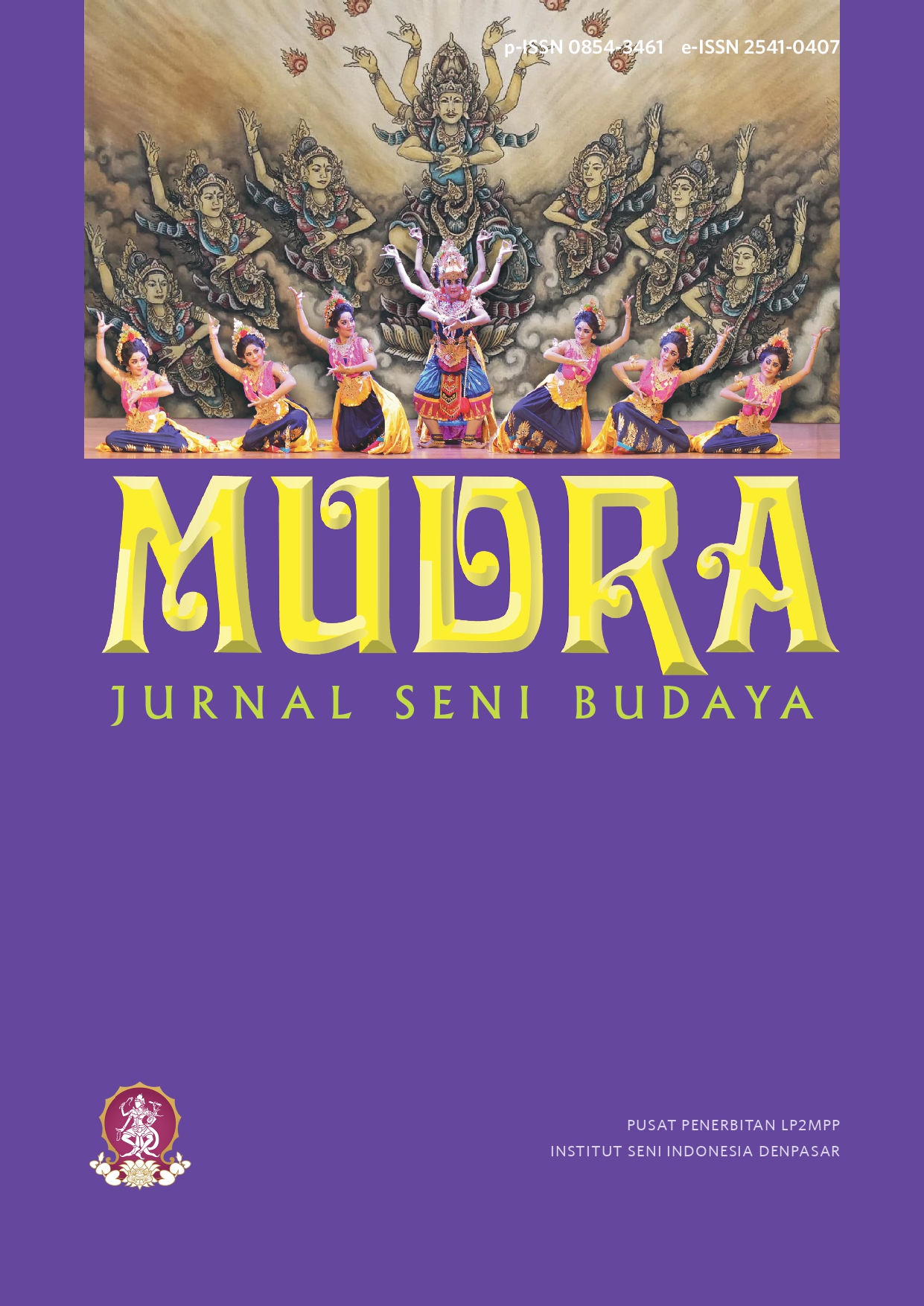Rice Straw Craft Preservation and Development in Nagano Prefecture, Japan
DOI:
https://doi.org/10.31091/mudra.v38i4.2276Keywords:
Rice straw, craft, culture, craftsmen, NaganoAbstract
The Japanese rice straw culture began in the Yayoi period approximately 2000 years ago. This culture can be found in almost all areas of Japan, including the Nagano Prefecture. One of the supporting elements of the rice straw culture development in this area is because it has been recognized as a potential rice farming area. Based on the historical evidence displayed in a number of museums, there are various traditional uses of rice straw for utility, ritual, and celebration needs. Unfortunately, the number of workshops and craftsmen is currently decreasing due to modernization. However, there are still several workshops that still exist and are actively producing rice straw crafts. Therefore, this research was conducted to understand various supporting aspects in the preservation and development program of rice straw crafts in Nagano Prefecture. From the mapping results in Otarimura and Azumino, it may be concluded that the character of the rice straw crafts produced those areas is through coiling and basket weaving methods. There are five elements that support the development of these crafts, namely human resources, production methods, design development, support from the government and private sector, and the market.
Downloads
References
FAOStat. (2021). Countries by Commodity. https://www.fao.org/faostat/en/#rankings/countries_by_commodity
JapanGov. (2020). Highlighting Japan: The Japanese and Rice. Tokyo: The Japan Journal.
Leipe, C., Long T., Wagner, M., Goslar, T., Tarasov, P.E. (2020). The Spread of Rice to Japan: Insights from Bayesian Analysis of Direct Radiocarbon Dates and Population Dynamics in East Asia. Quaternary Science Reviews, 244 (2020), 1-13, doi: 10.1016/j.quascirev.2020.106507
Wiyancoko, D. (2010). Design Culture and Cultural Sustainability. Bulletin of Asian Design Culture Society. Vol. 5, 561-572.
Miyazaki, K. (1992). Wara I – Mono to Ningen no Bunka-shi 1 (Rice straw – Cultural History of Things and Humans 1). Tokyo: Hosei University Press.
Ueda, A., Ooga, S. (2010). The Culture of Mottainai Seen as Symbiosis Between Japan’s Ceramic Producing Regions and the Natural Environment. Journal of Japanese Society for the Science of Design (JSSD), Vol. 57 (1), 65-74, doi: 10.11247/jssdj.57.101_1
Ministry of Agriculture, Forestry, and Fisheries. (2017). Cultivated area and yield of paddy rice produced in 2022. Tokyo: Statistics Department, Minister's Secretariat, Ministry of Agriculture, Forestry and Fisheries.
Ueda, A. (2013). Design Contribute Making a Living. Special Issue of Japanese Society for the Science of Design, Vol. 20 (2), 48-53, doi: 10.11247/jssds.20.2_48
Suzuki, N., Miyazaki, K. (2007). Resource and Culture-based Regional Development Mitigating Social Changes: Project Design for a Rice Straw Knowledge Region, Inagaki District, Tsugaru City, Aomori Prefecture. Bulletin of JSSD, 55 (1), 27-36, doi: 10.11247/jssdj.55.27
Kato, H., Yanagihara, M. (2021). Gift Competition in the “Furusato Nouzei System”: A Theoretical Approach in the Framework of Tax Competition. Studies in Regional Science, Vol. 51 (2), 175-195, doi: 10.2457/srs.51.175
Nagano Prefectural Government. (2016). Agriculture in Nagano Prefecture. Nagano: Nagano Agricultural Policy Division.
Nakanishi, R. (2009). Development of Rice-based Integrated Multiproduct Farming in the Saku Basin in Nagano Prefecture from the 1880s to the 1930s. Geographic Review of Japan Series B, 82 (1), 14-30, doi: 10.4157/geogrevjapanb.82.14
Purwandaru, P., Permanasari, E., Ueda, A. (2020). Japanese Rice Straw Community Approaches in Developing Rice Straw Culture (Case Study: Inagaki Wara No Kai, Aomori Prefecture, Japan). Ideology Journal, 5 (2), 113-120, doi:10.24191/idealogy.v5i2.233
Downloads
Published
How to Cite
Issue
Section
License
Copyright (c) 2023 Pandu Purwandaru

This work is licensed under a Creative Commons Attribution-NonCommercial-ShareAlike 4.0 International License.
- Copyright on any open access article in a journal published by Mudra Jurnal Seni Budaya is retained by the author(s).
-
The Creative Commons Attribution License 4.0 formalizes these and other terms and conditions of publishing articles.









